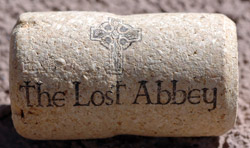 New Belgium Brewing and The Climate Conservancy have released a 36-page paper that assesses the carbon footprint of a 6-pack of Fat Tire.
New Belgium Brewing and The Climate Conservancy have released a 36-page paper that assesses the carbon footprint of a 6-pack of Fat Tire.
If you are one of those people who flips to the last page of the mystery book, the answer is “3,189 grams of CO2.” The New Belgium blog points out that “in and of itself is kind of a meaningless number. However, it provides a baseline to measure the results of future improvements and, most revealing, is what makes up that number. There definitely were some surprises.”
Not exactly light reading, because green is a complicated color.
You’ll notice, for instance, that glass and retail (red and blue) make up almost half of Fat Tire’s carbon footprint. So if New Belgium sold less beer in bottles and didn’t insist it be refrigerated along its route to us then its footprint would be smaller. And the brewery would sell less beer, and we’d be less happy with the condition of what is in the bottle. See, not so simple.
You may not want to wade through the entire report, but at least take the time to read the conclusions (page 34) and give them a little thought.
– James McMurtry is a favorite musician and I’m working on a book about brewing with wheat. So I gotta love this intro to a review of Childish Things:
McMurtry is like wheat beer – cloudy, agricultural, substantial and something of an acquired taste, you might be put off after a few sips but if you get the taste, it’ll stay with you.
I like Childish Things better than the reviewer, but that’s another discussion.
Beer in the big cities: NY Craft Beer Week Sept. 12-21 puts a nice focus on neighborhoods and crawls.
Nothing timid about Beer Exposed in London, Sept. 25-27. Look at the lineup of speakers. Boak (of Boak and Bailey, where I learned of the event) expresses concerns others of us might share browsing through the hip web site.
But… the whole thing smacks a bit of “beer is the new wine” to me. There’s quite a hefty entrance fee — £14 in advance, £17 on the door, which doesn’t include any of the beer walks or talks. Lots of the talks are focused on beer and food. There’s no-one over the age of 30 on the promotional material. There’s even a bloody dress code. Although if this is mostly to stop the sexist t-shirts, I don’t mind so much…
I’ll look forward to reading reports from the UK blogging contingency.
 I do like the sound of bottle of beer being uncorked, the pop followed by the lively sound of carbonation, or perhaps . . .
I do like the sound of bottle of beer being uncorked, the pop followed by the lively sound of carbonation, or perhaps . . . New Belgium Brewing and The Climate Conservancy have
New Belgium Brewing and The Climate Conservancy have  Got a caption for this photo of brewing professor/author Charlie Bamforth taken during a food-fashion-themed cookout?
Got a caption for this photo of brewing professor/author Charlie Bamforth taken during a food-fashion-themed cookout? Merlot does not suck.
Merlot does not suck.